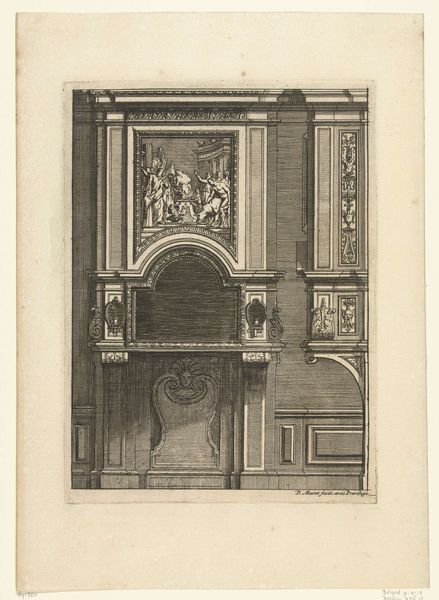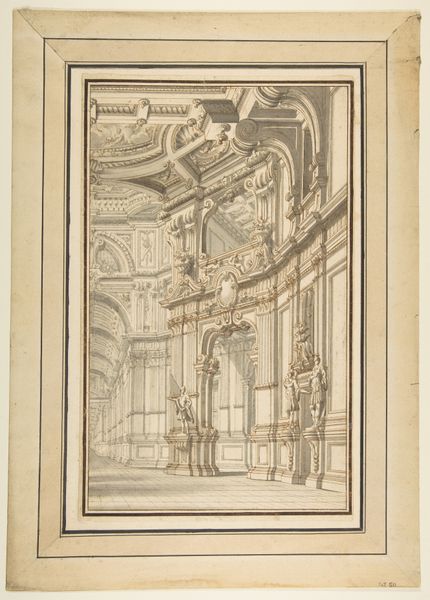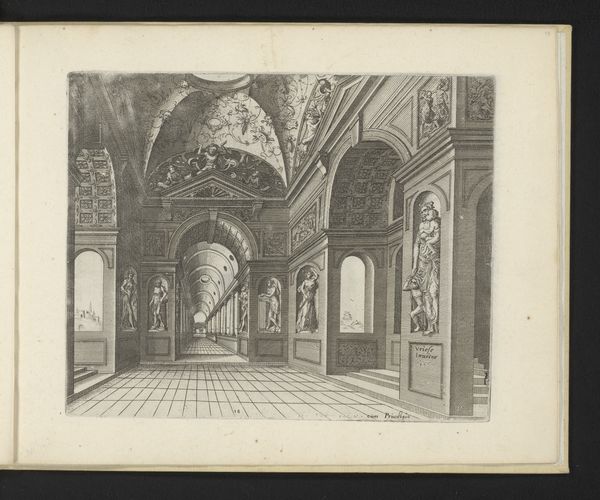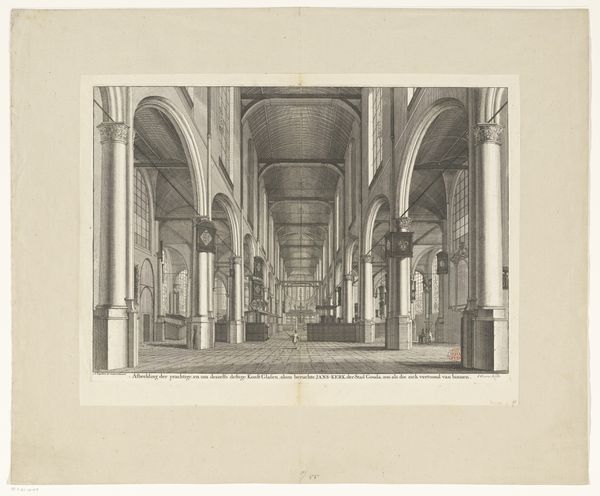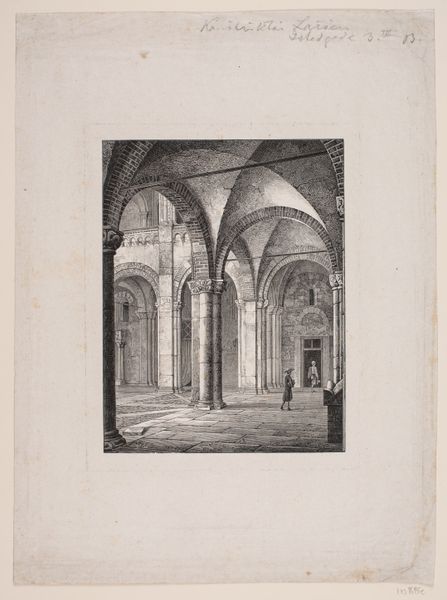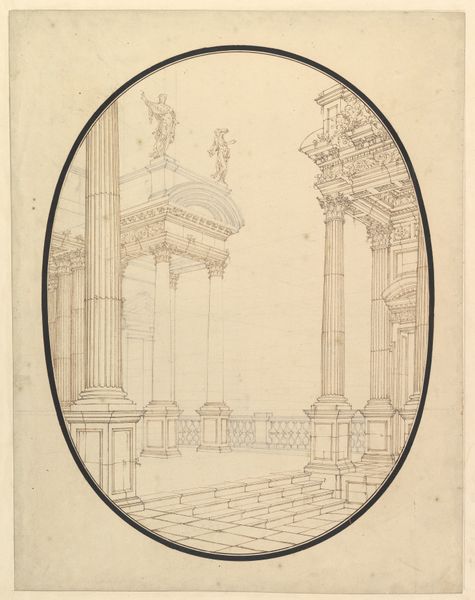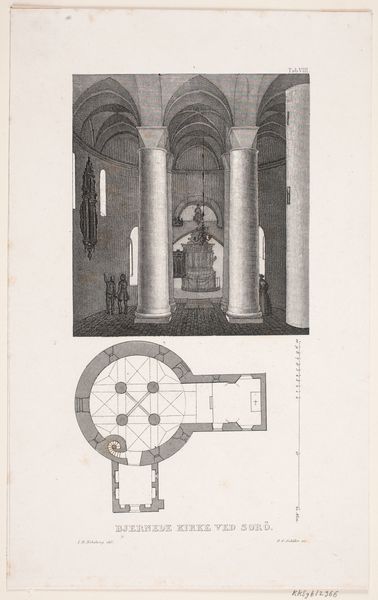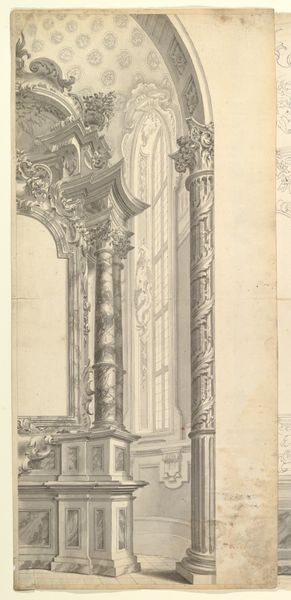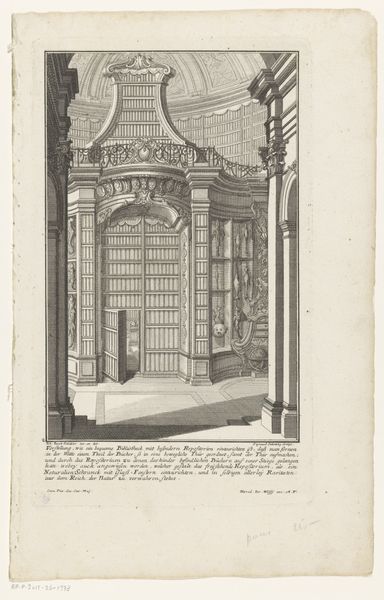
Interieur van de lantaren van het kasteel van Chambord Possibly 1872
0:00
0:00
print, etching, architecture
# print
#
etching
#
landscape
#
architecture
#
building
Dimensions: height 635 mm, width 399 mm
Copyright: Rijks Museum: Open Domain
Curator: This etching, attributed to Octave Guillaume de Rochebrune and likely created in 1872, depicts the interior of the lantern tower in the Château de Chambord. It's called "Interieur van de lantaren van het kasteel van Chambord." Editor: My immediate reaction is one of awe mixed with a slight unease. The meticulous detail almost feels obsessive, capturing a monument to royal power in a way that emphasizes its imposing grandeur but also feels rather sterile and lifeless. Curator: Yes, the etching technique lends itself beautifully to the architectural precision. But the stark contrast of light and shadow creates an atmosphere thick with historical weight, invoking an enduring sense of grandeur. The motifs feel almost labyrinthine in their intricate nature, creating a symbolic complexity. Editor: Labyrinthine is the right word! All those meticulously rendered carvings and columns...they speak to a deeply hierarchical society, a relentless effort to showcase wealth and privilege. I see not just the castle's physical space, but a symbol of systemic power structures, which had real and painful impact on those outside its walls. The question is: can we admire this artistic interpretation separately from acknowledging those power dynamics? Curator: It’s a fascinating question, as the Chateau was the location for so much monarchical symbolism throughout the Renaissance. I find myself pondering the recurring themes throughout Western civilization of staircases or towers to be perceived through architecture and interpreted through dreams: does this evoke the power granted to or taken by an elite ruling class? Editor: That’s exactly what this piece conveys for me, too, that deep tension. While Rochebrune’s technical skill is undeniable, I think its true strength lies in how it inadvertently highlights this conflict between artistic expression and its complicity with power. I cannot help but notice the artist almost seemed infatuated with this power; while the architectural features are intricate, no single human is visible in the landscape. The architectural scene appears sterile without inhabitants. Curator: It leaves one contemplating the passage of time and the stories held within those stone walls, indeed, which will continue long past our presence in this space. Editor: Yes, art offers beauty but should prompt interrogation: challenging viewers to contemplate its legacy, both intended and unintended, across the currents of history.
Comments
No comments
Be the first to comment and join the conversation on the ultimate creative platform.

